It has to take some level of gusto to take a franchise such as Guitar Hero and start over with it. Activision tapped FreeStyleGames to create a new start for the series, which has had its share of highs and lows. The goal was to craft Guitar Hero Live as if none of the previous games existed. This mindset, paired with the directive of going back to making the player feel like a guitar god, is clearly evident throughout Guitar Hero Live.
A day before the game's release, I had the chance to talk with Nathan Coppard, senior game designer at FreeStyleGames. We chatted about numerous topics, with many of them touching on what makes Guitar Hero Live special compared to previous titles. There is a completely new approach to nearly every aspect of the game, which was all the more evident when I unboxed my copy later that evening.
The Live mode is something like a first-person guitarist simulator. You play the guitar for a series of bands that are playing at a pair of music festivals. The bands have different members and musical styles, but the presentation remains the same. At the start of a set, the camera takes a first-person viewpoint and starts backstage, with real people ushering you through dark hallways and onto a stage. The camera pans around to show the venue and the crowd, giving a believable sense of taking the stage.
The ensuing set is done in one take, with the viewpoint showing you interacting with your bandmates during songs, the crowd singing along, and the band bantering with the crowd between songs. Play poorly, and the reactions switch to the other set of footage, with bored crowds milling about and your bandmates giving you looks that make you feel like a complete ass. According to Coppard, they wanted to get the player in front of real people and get real reactions, hopefully to the point of inducing some level of stage fright. It's a novel concept that is executed well.
However, the Live mode does have its share of limitations. Given how much work was put into recording footage for the stage shows, it is unsurprising that no new music will be added. You are also unable to change the set lists, for likely the same reasons. Finally, and at least in my experience, it can be all too easy to concentrate so much on the note highway that you miss a lot of the activity going on in the crowd.
Live mode seems pretty flat in comparison to the awesome TV mode, which allows you to have access to the games music catalog and play along to whatever is on the mode's two channels (with a third to be added "very soon"). The channels are ingenious in their approach, as they are divided into real-time programming blocks that showcase different musical styles. Channel 1 might be doing a block on metal songs from 5:00 PM to 6:00 PM, while Channel 2 is doing a half-hour block of indie hits followed by a half-hour of pop music.
As you tune in, you might land in the middle of a song, but you can keep playing from there. If you don't like what's on one channel, you can switch to the other. Additionally, the songs have their original music videos playing in the background, which is a fun (and sometimes incredibly strange) addition to the experience. The schedule for the programming blocks changes daily, and new music gets added to it every two weeks.
This feature is one of Coppard's favorites, as the programming blocks are curated by members of the FreeStyleGames team. According to him, it's great fun to make them, since it's basically deejaying a journey through different avenues of music. Each block has starts, endings and brief breaks to showcase new music. The short breaks in the action help cement the notion that it's like playing along to MTV (back when it actually played music).
One of the most interesting changes that FreeStyleGames has made is in turning the DLC model on its head. As songs are added to the game, they eventually make their way to the overall catalog and into the programming blocks for the TV mode. The only hurdle is new music is featured in Premium Events first and stays for roughly 15-20 days. This means that once you've purchased the game, you could just play through the channels, and though you can't pick what comes up next you'll have just as good of a chance to play the new songs as anyone else.
As you play through channels and get to the end of songs, you gain a number of coins, which can be redeemed to customize your player panel, note highway, or to purchase play tokens. The tokens allow you to play through any song in the catalog, from the ones on disc to the ones most recently added to the online catalog. However, while you can change the difficulty on the fly, you cannot restart the songs, and quitting them early still burns the token. This model makes it much harder for those who like to get 100% on Expert difficulty on all songs, since you can't just play the same song over and over without spending tokens.
You'll receive about 50 tokens by leveling up your profile. Beyond that, you'll purchase them with coins or by using Hero Cash, which is the game's real money currency. After playing three or four songs, you can gain enough coins for to redeem for a token (assuming you get the 10 pack or higher). For some players, that won't be fast enough, and they'll want to get a pack for some real money.
Assuming the mid-range packs for both (25 tokens for 1,125 HC, 1,800 HC for $5.99), it comes out to about $0.14 per token. Given how often I've spent one or two bucks in other music games on songs I only played once, this seems like a fair model. Additionally, if you plan on having people over, you can spend $5.99 on a Party Pass that gives unlimited play tokens for 24 hours.
This aspect of the DLC model seems quite reasonable. It is also one that has helped attract bands and record labels to add their content to the catalog. In my opinion, it allows for more exploration of the music catalog. You can play through TV mode to experience new songs and have fun with known ones, earning coins all along, and then hop into the music catalog to spend a few tokens and pick out some favorites for a spin.
However, the unreasonable danger to your wallet comes from the Premium Events, which feature new music but only if you achieve three stars or higher on three songs as part of the challenge. Playing through each one consumes a token, and once all three are completed, you can play the songs that are part of the event. Score high enough through the set, and you'll unlock new personalization options. To play through it again, you'll have to start over. For a couple hundred Hero Cash, you can get right back into it, which is a shortcut back into that feedback loop. Considering how difficult it is to place in the top three goals, let alone the best, it seems like the loop is designed to burn tokens/Hero Cash.
While Guitar Hero Live does feature multiplayer, it definitely comes across as a halfhearted attempt. In my experience, I was unable to get the second player, who only showed up as "Guest," to have his/her own progress within the game. This means that progress is only tracked for the first player, such as stars on songs or progress toward challenges. While I would expect that only one player should gain coins at a time, it feels awfully limiting to relegate the performance and progress of the second player to a nameless, temporary profile.
The new controller is a ground-up redesign, featuring two rows of three buttons. This arrangement removes the need to play with your pinkie finger but still manages to be much more complicated. Toward the easiest of the five difficulty levels, you may only need to hit individual buttons, but as you go up, you'll hit two- or three-button combinations of nearly every type. It melts the brain to go from one type of chord to another, but it feels a lot more like playing the real thing. To this end, the last time I felt this engaged with a music game was with the original Guitar Hero, so this speaks the fun of the new controller arrangement.
However, the controller is not without its flaws. In my experience, both controllers that came with the review copy quickly developed a squeaky strum bar. This resulted in the strum bar becoming much louder and feeling bit grittier, though to date, there's no accuracy loss. I reached out to the game's PR team to ask about the issue and was told that the guitars need more time to be broken in, but after quite a few songs, I've yet to notice an improvement. According to other sources, this problem doesn't seem uncommon, so while the exterior of the controller is new, the strum bar seems prone to the same old issues.
Guitar Hero Live is basically a return to its guitar-only roots, which is what made the original games great. The current song catalog is a pretty good mix, but it is their presentation within the channel-based TV mode that makes the game truly different. Rock Band still holds the crown as the musical party game, but while that series is in a rut, Guitar Hero Live is a fresh take on the genre that future games would do well to follow.
Score: 9.0/10
More articles about Guitar Hero Live


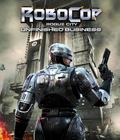
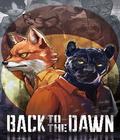
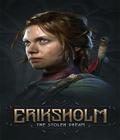
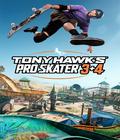
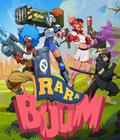
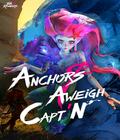
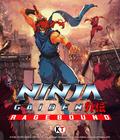
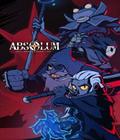

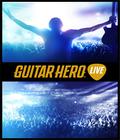 Guitar Hero Live introduces two powerful ways to play, including GH Live, a first-person point of view where you are up on stage as the star of the show.
Guitar Hero Live introduces two powerful ways to play, including GH Live, a first-person point of view where you are up on stage as the star of the show.





































